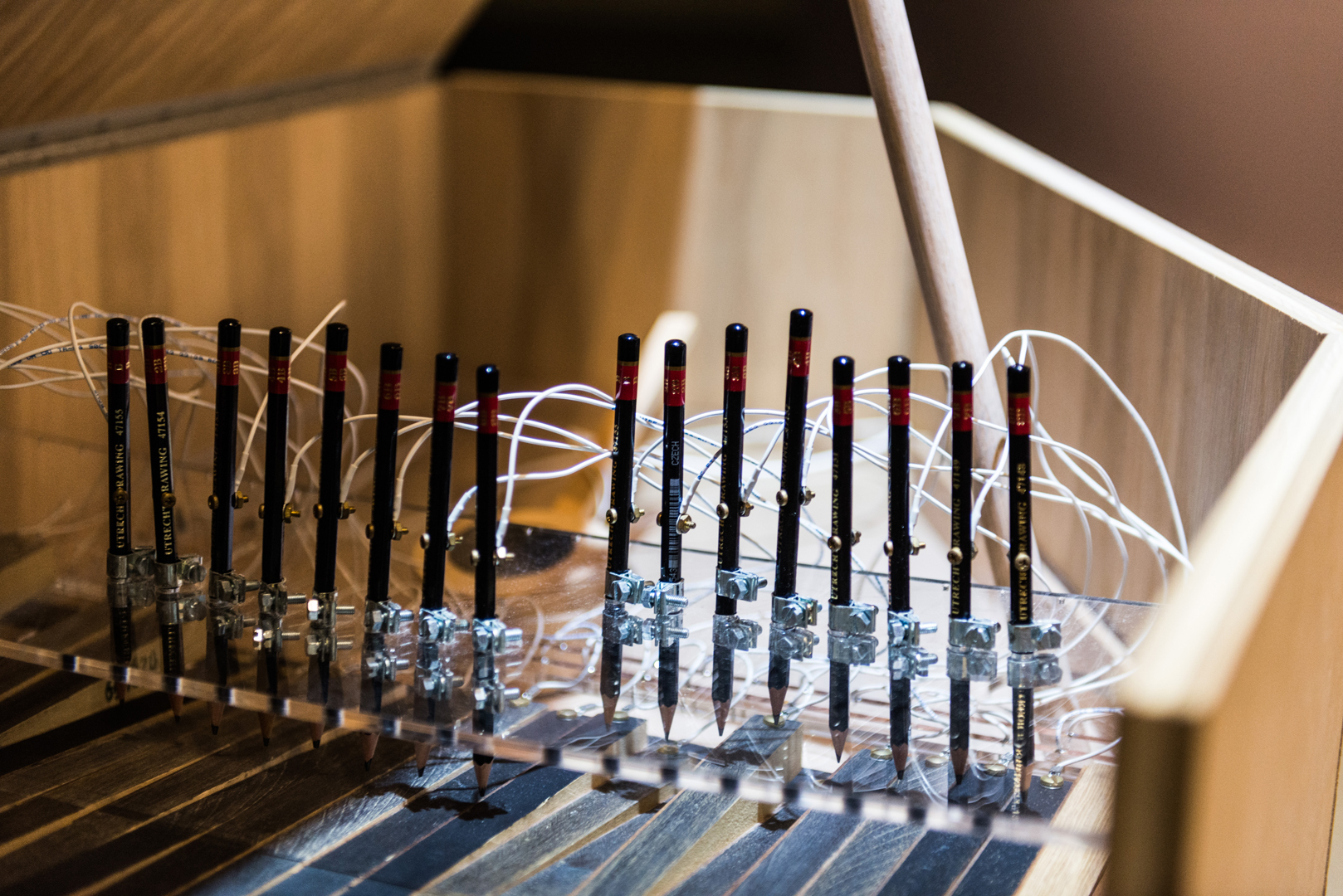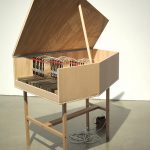“Graphite Piano” by Phoebe Hui
Title:
- Graphite Piano
Artist(s) and People Involved:
Exhibiting Artist(s):
Symposium:
- ISEA2016: 22nd International Symposium on Electronic Art
-
More artworks from ISEA2016:


Venue(s):
Creation Year:
- 2013
Medium:
- Pencils, wood, acrylic, electronics, conductive tape, wires, coppers, speakers, Japanese ladle
Size:
- 36 in x 30 in x 39 in
Artist Statement:
Graphite Piano is a wooden sound instrument, shaped to resemble a piano. It is built with 3 sets of 8 pencils, each with a different darkness ranging from B to 8B. The instrument also has 24 keys, one per pencil. Each pencil is placed above one key. The keys have been drawn on the wood with various shades of pencils. The shade of each key is the same as the shade of the pencil that corresponds to it. The pencils in each set are all placed at three different distances from the keys. Therefore, the same pencil shade will generate different tones, depending on its distance to the key.
Musicians can play the instrument by pressing the keys. This action facilitates the contact of the pencil and the key, which will complete the sound oscillator circuit and generate the tone. The pencil and its marks thus work as a sound switch. This idea is related to other instruments or sound generating devices, including Louis Bertrand Castel’s 18th century Clavecin pour les yeux (Ocular Harpsichord) (Hankin 1995, 73), as well as Theremin created by Leon Theremin and the Moog synthesizer by Robert Arthur Moog (and others), both made in the 20th century. The main mechanism of playing the Moog synthesizer is based on flipping on/off switches, so as “Graphite Piano” by pressing the keys to turn on/off of the sound circuit. Besides, musicians can play “Graphite Piano” by waving their hands above the keys. Similarly, sound generation in the Theremin is based on the player’s interaction with an electromagnetic field.
Using the pencil as one of the electronic components for generating sounds seems absurd yet completely makes sense because of its physical properties. The pencil core is made of graphite, which enables the pencil to serve as an electrical conductor. It is also a tool traditionally associated with writing and drawing. The physicality and the function of pencil make it an ideal element to be used in my sound sculpture. This work expresses my interest in the physical aspects of sound and language.










